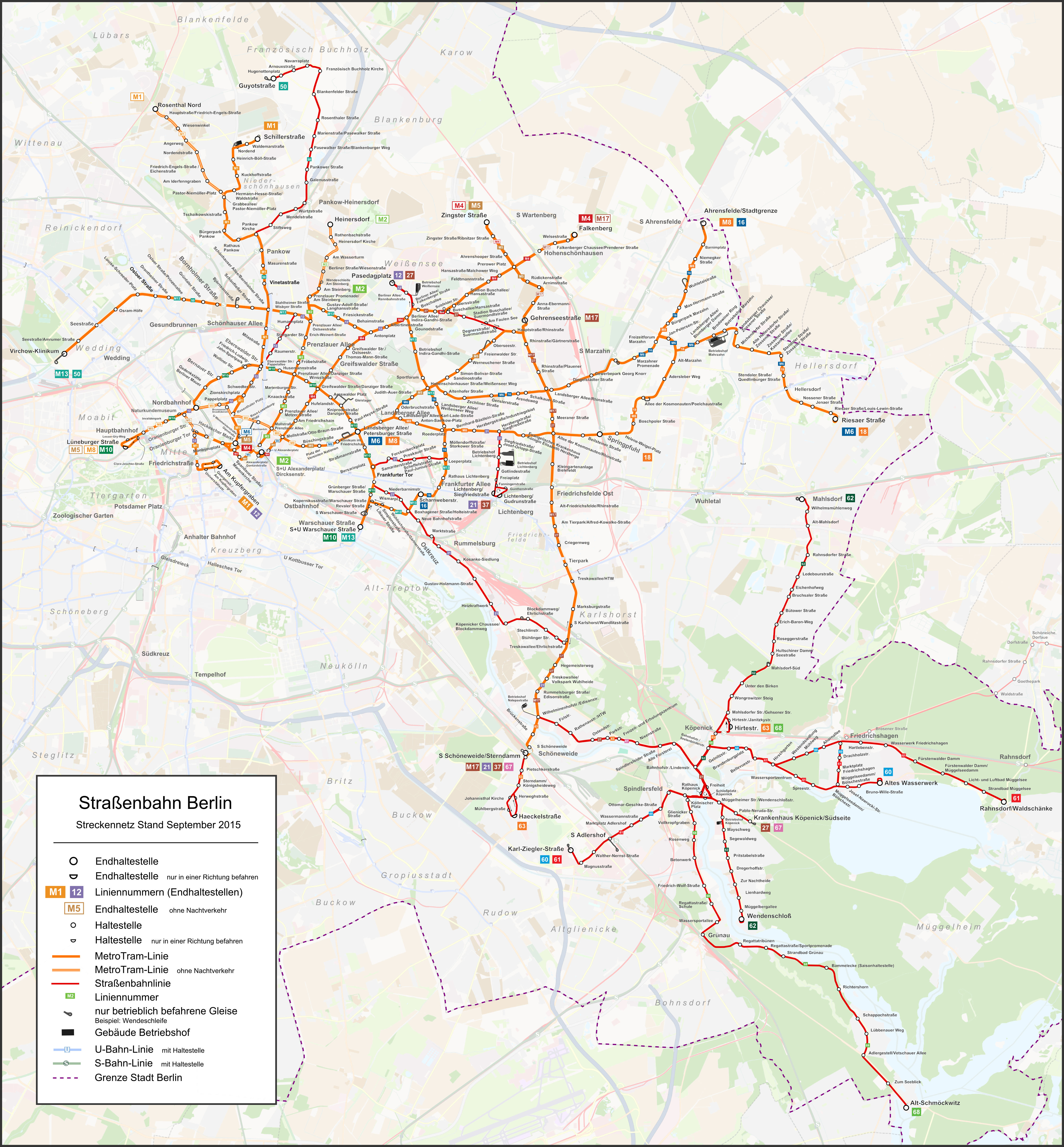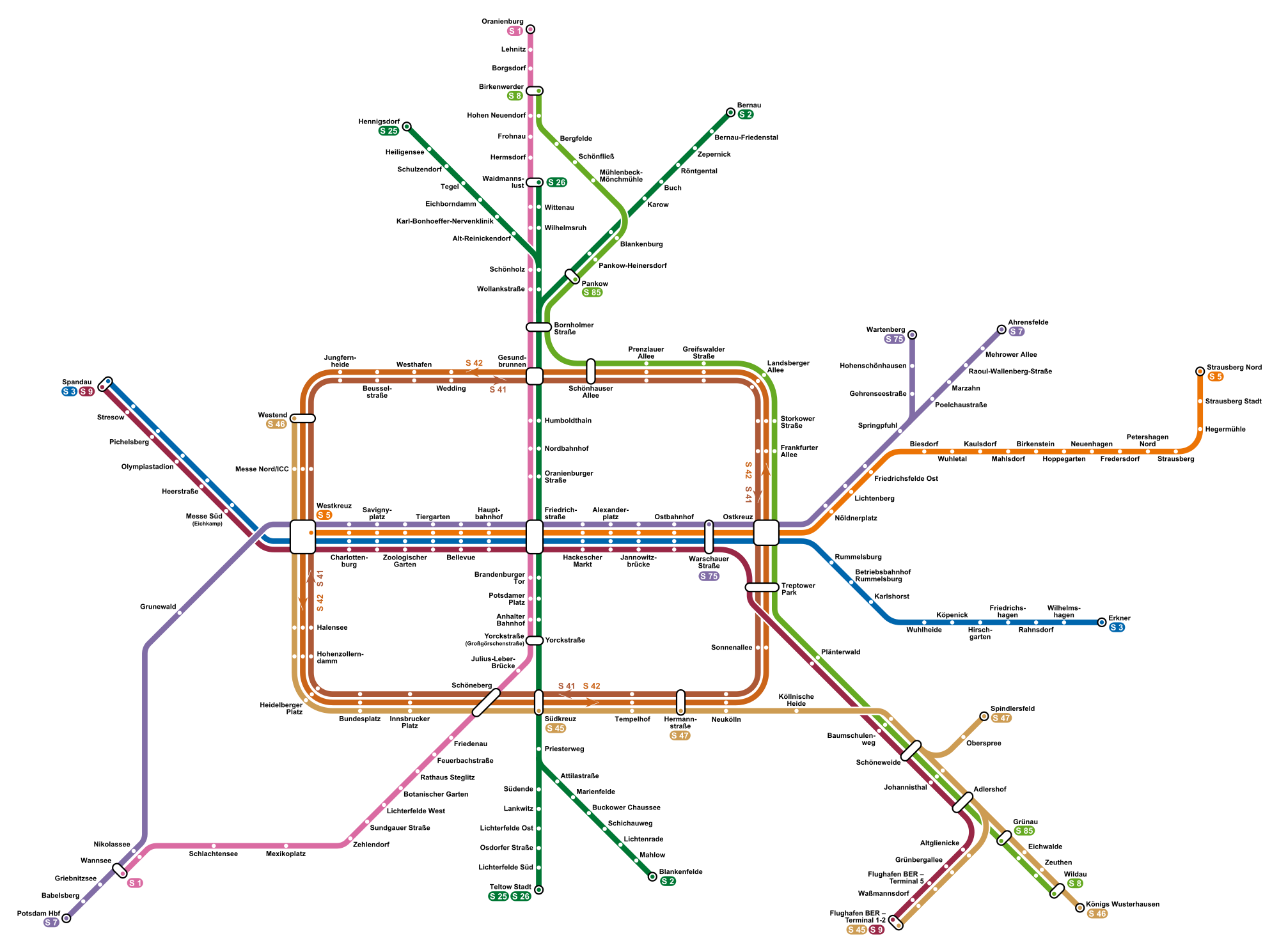|
Lehrter Straße
The Lehrter Straße (also: ''Lehrter Strasse'', ''Lehrterstraße'', and ''Lehrterstrasse'') is a residential street in Moabit, a sub district of Mitte, one of Berlin's 12 boroughs of which the borders were redefined following the 1989 Fall of the Berlin Wall. It runs for an almost completely straight length, except for a small kink shortly before its southern extremity. The street is approximately 1,500 metres (0.93 miles) long and lies in a southeasterly direction from the Perleberger Strasse near the Fenn Bridge, to the west of, and parallel to the disused Lehrter railway complex which was disbanded in the 1950s. It joins the Invalidenstraße a few hundred metres from the new Berlin Hauptbahnhof (Berlin's central railway station), near the site of the former Invalidenstraße East-West Berlin Cold War checkpoint. The street consists of 75 houses numbered in horseshoe fashion. After the Invalidenstrasse intersection the traffic route continues south on Clara-Jaschk Strasse. ... [...More Info...] [...Related Items...] OR: [Wikipedia] [Google] [Baidu] |
Coat Of Arms Of Berlin
The coat of arms of Berlin is used by the German city state as well as the city itself. Introduced in 1954 for West Berlin, it shows a black bear on a white shield. On top of the shield is a special crown, created by the amalgamation of the mural crown of a city with the so-called people's crown (), used in Germany to denote a republic. Berlin's various boroughs use their own emblems. The bear has been used as a charge in the Berlin coat of arms since 1709, formerly alongside the eagles of Brandenburg and Prussia. A bear occurs on seals, coins and signet rings from as early as the late 12th century (but not as heraldic charge before 1709), presumably due to a canting association with the city's name. History The oldest preserved and known seal of Berlin is from 1253. It depicts the Brandenburg Eagle spreading its wings in a clover-shaped archway. The text on the seal is "" (seal of Berlin's citizens). It supposedly was the seal of Berlin's first mayor Marsilius. A later seal ... [...More Info...] [...Related Items...] OR: [Wikipedia] [Google] [Baidu] |
Trams In Berlin
The Berlin tramway (german: Straßenbahn Berlin) is the main tram system in Berlin, Germany. It is one of the oldest tram networks in the world having its origins in 1865 and is operated by (BVG), which was founded in 1929. It is notable for being the third-largest tram system in the world, after Melbourne and St. Petersburg. Berlin's tram system is made up of 22 lines that operate across a standard gauge network, with almost 800 stops and measuring almost in route length and in line length. Nine of the lines, called Metrotram, operate 24 hours a day and are identified with the letter "M" before their number; the other thirteen lines are regular city tram lines and are identified by just a line number. Most of the recent network is within the confines of the former East Berlin—tram lines within West Berlin having been replaced by buses during the division of Berlin. However the first extension into West Berlin opened in 1994 on today's M13. In the eastern vi ... [...More Info...] [...Related Items...] OR: [Wikipedia] [Google] [Baidu] |
Berlin S-Bahn
The Berlin S-Bahn () is a rapid transit railway system in and around Berlin, the capital city of Germany. It has been in operation under this name since December 1930, having been previously called the special tariff area ''Berliner Stadt-, Ring- und Vorortbahnen'' (Berlin city, orbital, and suburban railways). It complements the Berlin U-Bahn and is the link to many outer-Berlin areas, such as Berlin Brandenburg Airport. As such, the Berlin S-Bahn blends elements of a commuter rail service and a rapid transit system. In its first decades of operation, the trains were steam-drawn; even after the electrification of large parts of the network, a number of lines remained under steam. Today, the term ''S-Bahn'' is used in Berlin only for those lines and trains with third-rail electrical power transmission and the special Berlin S-Bahn loading gauge. The third unique technical feature of the Berlin S-Bahn, the , is being phased out and replaced by a communications-based train contro ... [...More Info...] [...Related Items...] OR: [Wikipedia] [Google] [Baidu] |
Birkenstraße (Berlin U-Bahn)
Birkenstraße is a Berlin U-Bahn station located on the line. It was opened in 1961 by B. Grimmek. There are two entrances to the station, located at the Birkenstraße and Wilhelmshavenerstraße crossroad, on either side of the road. The station's walls are decorated with green tiles in reference to the station's name—the word ''birke'' is German for birch tree A birch is a thin-leaved deciduous hardwood tree of the genus ''Betula'' (), in the family Betulaceae, which also includes alders, hazels, and hornbeams. It is closely related to the beech-oak family Fagaceae. The genus ''Betula'' contains 30 to .... J. Meyer-Kronthaler, ''Berlins U-Bahnhöfe'', Berlin: be.bra, 1996 References U9 (Berlin U-Bahn) stations Buildings and structures in Mitte Railway stations in Germany opened in 1961 {{Berlin-railstation-stub ... [...More Info...] [...Related Items...] OR: [Wikipedia] [Google] [Baidu] |
U-Bahn
Rapid transit in Germany consists of four U-Bahn systems and fourteen S-Bahn systems. The U-Bahn commonly understood to stand for Untergrundbahn (''underground railway'') are conventional rapid transit systems that run mostly underground, while the S-Bahn or Stadtschnellbahn (''city rapid railway'') are commuter rail services, that may run underground in the city center and have metro-like characteristics in Munich, Hamburg and Berlin which they only have to a lesser extent in other cities. There are also over a dozen premetro or Stadtbahn systems that are rapid transit in the city center and light rail outside. There are four U-Bahn systems, namely in Berlin, Hamburg, Munich and Nuremberg; these are all run by the transit authorities in the city. Some cities call their Stadtbahn "U-Bahn" (like Frankfurt) or abbreviate their Stadtbahn with a U. The confusing term "U-Stadtbahn" is also used on occasion and as "U-Bahn" is often seen as the more desirable term, common parlance ... [...More Info...] [...Related Items...] OR: [Wikipedia] [Google] [Baidu] |
Wertheim (department Store)
Wertheim was a large department store chain in pre-World War II Germany. It was founded by Georg Wertheim and operated various stores in Berlin, one in Rostock, one in Stralsund (where it had been founded), and one in Breslau. It was Aryanized under the Nazis. Founding and early years In 1875, Georg's parents, Ida and Abraham Wertheim (who sometimes went by the name Adolf), had opened a modest shop selling clothes and manufactured goods in Stralsund, a provincial town on the Baltic Sea. An extensive network of family members ensured a low-priced supply of goods. In 1876, one year after the shop opened, the two eldest sons Hugo and Georg (aged 20 and 19 respectively), went to work in the shop following their apprenticeships in Berlin. Three younger sons later joined them. Expansion and growth The two brothers quickly brought new ideas into the shop: customers were allowed to replace goods, the price of a good was no longer debatable but reliable, and purchases were made strictl ... [...More Info...] [...Related Items...] OR: [Wikipedia] [Google] [Baidu] |
Lehrter Straße
The Lehrter Straße (also: ''Lehrter Strasse'', ''Lehrterstraße'', and ''Lehrterstrasse'') is a residential street in Moabit, a sub district of Mitte, one of Berlin's 12 boroughs of which the borders were redefined following the 1989 Fall of the Berlin Wall. It runs for an almost completely straight length, except for a small kink shortly before its southern extremity. The street is approximately 1,500 metres (0.93 miles) long and lies in a southeasterly direction from the Perleberger Strasse near the Fenn Bridge, to the west of, and parallel to the disused Lehrter railway complex which was disbanded in the 1950s. It joins the Invalidenstraße a few hundred metres from the new Berlin Hauptbahnhof (Berlin's central railway station), near the site of the former Invalidenstraße East-West Berlin Cold War checkpoint. The street consists of 75 houses numbered in horseshoe fashion. After the Invalidenstrasse intersection the traffic route continues south on Clara-Jaschk Strasse. ... [...More Info...] [...Related Items...] OR: [Wikipedia] [Google] [Baidu] |
09050404 Berlin Moabit, Lehrter Straße 48B 005
9 (nine) is the natural number following and preceding . Evolution of the Arabic digit In the beginning, various Indians wrote a digit 9 similar in shape to the modern closing question mark without the bottom dot. The Kshatrapa, Andhra and Gupta started curving the bottom vertical line coming up with a -look-alike. The Nagari continued the bottom stroke to make a circle and enclose the 3-look-alike, in much the same way that the sign @ encircles a lowercase ''a''. As time went on, the enclosing circle became bigger and its line continued beyond the circle downwards, as the 3-look-alike became smaller. Soon, all that was left of the 3-look-alike was a squiggle. The Arabs simply connected that squiggle to the downward stroke at the middle and subsequent European change was purely cosmetic. While the shape of the glyph for the digit 9 has an ascender in most modern typefaces, in typefaces with text figures the character usually has a descender, as, for example, in . The mod ... [...More Info...] [...Related Items...] OR: [Wikipedia] [Google] [Baidu] |
Sauerbruch Hutton
Sauerbruch Hutton is an international agency for architecture, urban planning and design. It was founded in London in 1989 and is now based in Berlin, Germany. The practice is led by Matthias Sauerbruch, Louisa Hutton and Juan Lucas Young. Architecture The office's best-known buildings include the GSW Headquarters in Berlin, the Federal Environment Agency in Dessau and the Brandhorst Museum in Munich. More recently, the Experimenta Science Centre in Heilbronn and the Museum District M9 in Venice Mestre were opened. Outside of Germany the firm has worked on projects in the UK, Finland, France, Italy, Switzerland and Luxembourg. Early work The firm's first offices were located in London, where both founders were engaged in teaching roles. Many of their first commissions were in relatively confined urban areas, such as L House in London. A typical Victorian terrace, this was the practice's first essay in applied colour. The architects used colour to visually expand the cramped s ... [...More Info...] [...Related Items...] OR: [Wikipedia] [Google] [Baidu] |
S-Bahn Berlin Lehrter Stadtbahnhof
The S-Bahn is the name of hybrid urban-suburban rail systems serving a metropolitan region in German-speaking countries. Some of the larger S-Bahn systems provide service similar to rapid transit systems, while smaller ones often resemble commuter or even regional rail. The term derives from ''Schnellbahn'', ''Stadtbahn'' or ''Stadtschnellbahn''. Similar systems in Switzerland are known as S-Bahn as well. In Belgium it is known as S-Trein (Flemish) or Train S (French). In Belgium there are S-Trains in the five largest cities: Brussels, Antwerp, Liège, Ghent and Charleroi. In Denmark, they are known as S-tog , in the Czech Republic as Esko or S-lines. Characteristics There is no complete definition of an S-Bahn system. S-Bahn are, where they exist, the most local type of railway stopping at all existing stations inside and around a city, while other mainline trains only call at major stations. They are slower than mainline railways but usually serve as fast crosstown ser ... [...More Info...] [...Related Items...] OR: [Wikipedia] [Google] [Baidu] |





